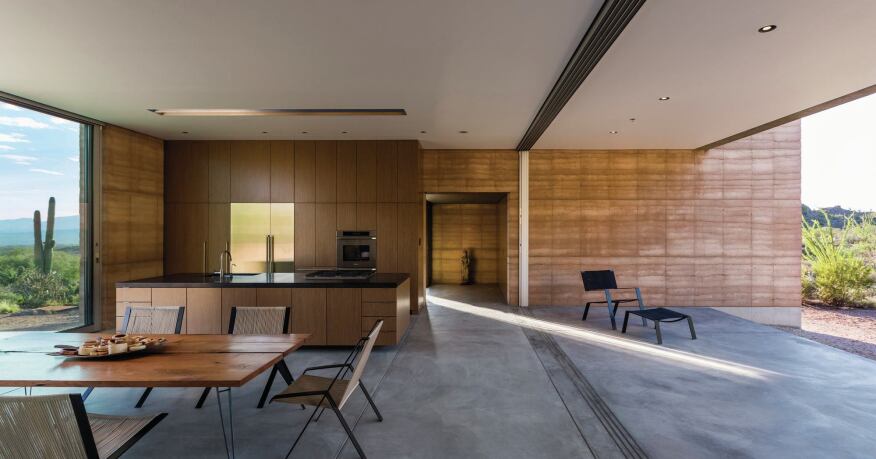
In honor of Earth Day, Custom Home and BUILDER take a look back at five Builder’s Choice Custom Home Design Award-winning projects that are as environmentally-conscious as they are commendable. These projects, designed with the planet in mind, are dynamic and innovative—some powered by the resources they produce.
The Builder’s Choice Custom Home Design Awards (BCCHDAs) honor excellence and innovation in residential design and construction across 13 categories including project of the year, modular, multi-family, and architectural interiors. With this year’s extended deadline fast approaching—May 2 for early submissions, and May 6 for late submissions—we encourage you to submit your own best work here.
Excerpts from the awards coverage highlighting the projects’ sustainable features are included below. Follow the link in each project’s title to view more photos and information.
Tucson Mountain Retreat, Tucson, Ariz., designed by DUST
The layout is keenly attuned to the Sonoran Desert site. The long side faces south to allow the sun to passively heat the concrete floors, and the building’s deep overhangs and thermal mass keep it cool in the summer. A large kitchen/dining/living space is flanked by an acoustically designed music room/recording studio on one side and two bedrooms on the other. Each volume is fitted with glass walls that dematerialize to take in views and breezes.

RainShine House , Decatur, Ga., designed by Robert M. Cain, Architect
As an exercise in green design, this LEED Platinum–certified house puts a check in every column: passive solar, active solar, rainwater collection, natural daylighting and ventilation, energy-efficient electrical and mechanical systems, resource-conserving materials, a tight building envelope, low-VOC finishes, and no-irrigation landscaping. What got the attention of our judges, though, was that its environmental ethos also yields a thoroughly pleasing aesthetic experience.

Sustainable Steel Home , San Diego, designed by Macy Architecture/
Jensen & Macy Architects
The home’s footprint allows for plenty of natural ventilation, and it also connects the interiors with the outside in true mid-century spirit. The house maximizes its infill location by providing city and water views to the main rooms, which all occupy the second floor. Photovoltaics produce on-site power, and rainwater harvesting meets the site’s irrigation needs. Lots of glass, both transparent and translucent, helps with daylighting and passive solar.

GREENville House, Greenville, N.C., designed by Tonic Design
The owners of this new LEED Silver-rated residence did their sustainability homework in advance. “They knew about solar and geothermal from the beginning,” says project designer Katherine Hogan. That head start allowed Hogan and principal designer Vincent Petrarca to weave green features into the fabric of the building, rather than tack them on as options after the fact.

Green Lantern , San Antonio, Texas, designed by John Grable Architects
In one of San Antonio’s, oldest neighborhoods, architect and developer John Grable, FAIA, salvaged 45 percent of a 1948 house because of his client’s commitment to conservation and green building. At the same time, a contemporary home was the aim.

read more…
http://www.ecobuildingpulse.com/projects/five-award-winning-sustainable-homes-from-the-builders-choice-custom-home-design-awards_s?utm_source=newsletter&utm_content=Article&utm_medium=email&utm_campaign=EBP_042616%20(1)&he=bd1fdc24fd8e2adb3989dffba484790dcdb46483




